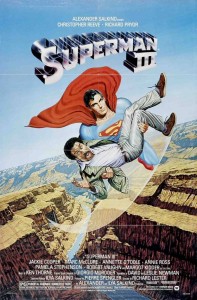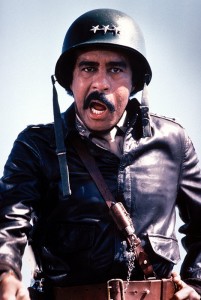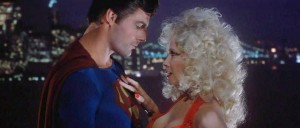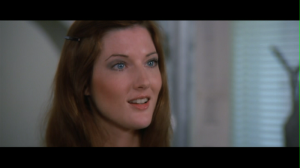 There were so many classic films released in 1983 that it is almost incomprehensible to rank the awesomeness that abounded that year. So let’s not, and talk about Superman III instead.
There were so many classic films released in 1983 that it is almost incomprehensible to rank the awesomeness that abounded that year. So let’s not, and talk about Superman III instead.
Okay, so maybe that setup is unfair. There are still some things that are good about SIII. There’s Christopher Reeve. He’s still likable. There’s Annette O’Toole who gets a “very yes!” as Lana Lang, Clark Kent’s hometown sweetie now that he’s on the outs with the aggressive Lois Lane (Margot Kidder). There’s the fact that this isn’t Superman IV: The Quest For Peace, which alone makes SIII some kind of classic.
But then there are the things that are wrong with the film, and they outweigh the right stuff rather severely. You have Richard Pryor, on his bid to become a more family-friendly entertainer (see The Toy or the short-lived Pryor’s Place TV show), in what could only be seen as an epic mismatch. Robert Vaughn as a manipulating multimillionaire comes nowhere near Gene Hackman’s smarmy performance as Lex Luthor in the original Superman, but not for lack of trying. Vaughn’s Ross Webster is an underwritten xerox of Luthor, right down to the busty moll at his side. And while the first two films mostly played things serious, with a light-heartedness just over the top, RIII makes no bones about being a comedy, in the broadest sense.
It just occurred to me that in a duoplex theater, such as would have been most common in 1983, you could have Luke Skywalker on one screen fighting to not give into the dark side in Return Of The Jedi, while on the other screen you had Superman, under the control of Webster and his only slightly willing henchman Gus Gorman (Pryor), going for the dark side like a thirsty coal miner chugs a beer. I suppose this is some meta-commentary about Reganomics and giving into temptation, or the corruption of souls, or it was just a knee-jerk reaction of producer family the Salkinds who had full control of the series at this point.
It is almost legendary now that the producers clashed furiously with Superman 1‘s director Richard Donner who happened to nonetheless make the Superman vehicle that remains the standard. After doing a ton of work on what would have been a massive epic, the film was cut down, with a large bit held over for Superman II. Donner was back on, but not for long, as Richard Lester was brought in to take it the rest of the way. I’ve heard this scenario was much nastier than my brief synopsis, but the Salkinds were happy enough with Lester’s work that they brought him back for Number Three. They also were the producers of the ill-fated Supergirl film, but that will have to just wait.
Lester, like Pryor, was an odd fit. Although he is an American, he made his career in British TV and film, with his biggest and best credit being the director of The Beatles’ A Hard Day’s Night (not as much for the follow-up Help!) His comedy seemed to be much more pointed and obvious, whereas Donner’s in the first (and a lot of the second) was more screwball. Clark and Lois were more like Hepburn and Tracy. In SIII, Clark and Lana aren’t much like anything, for although I like Annette O’Toole’s work overall, there is zero chemistry between her and Reeve. That’s a shame because the good-naturedness of both characters seems like it should work, and it is frustrating to the viewer to watch them constantly smiling their way out of what should have been a natural combo. Maybe the thing that actually makes the Clark and Lois dynamic work is that she doesn’t really need him and can stand on her own, so there can be equanimity between them. But Lana is in desperate need of a superman, but unfortunately for us, not the Superman.
The other nagging thing that would grate against the audience is that the main “villain” just doesn’t work. Gus Gorman is straight out of a film noir, a hapless schlub who gets sucked into some bad, bad stuff and there is only one way his story arc is going to end. Only he can choose what side he’ll crash on, but he was born to crash. Only, when you cast one of Hollywood’s favorite funny men, you can’t allow that crash; at least not one of any real consequence. And also, we can accept Pryor as many things: shifty, untrustworthy, even ripped to the gills…but we cannot accept him as a weasel, and Gus Gorman is a weasel. We really shouldn’t like him so much, but we do, and while that ought to make his Come To Jesus/Superman moment more satisfying, it offers us nothing. We should feel conflicted and then feel uplifted because Gorman saw the light. But we always were rooting for him, even when he was doing bad things, so we don’t feel any tension.
And when it is time for the man who would never make the sacrifice for the good of anyone but himself to actually do so, that sacrifice should mean something. It should hurt that he finally came to life at the moment of death. But when you put Pryor in that place, you can’t let him die, and so he doesn’t. The audience accepts it on that basis and nonetheless feels the character has been cheated.

“‘Cause when you reach over and put your hand into a pile of goo that was a viable franchise, you know what to do.”
As the series wore on, the effects got lousier and lousier too, with the nadir being Part Four where the same Superman flight shot was repeated over and over again, sometimes flipped left to right from right to left. With that in mind, the effects in number Three are easily better, yet far worse than that first film. To beat that old phrase down hard, you honestly did “believe a man could fly” but by that third installment, even if you couldn’t see the wires, you could “feel” them. The grace and effortlessness of flight seemed now to be burdensome, and I think that also comes through in Reeve’s performance. He wore the suit by choice at first, but eventually he became the suit, and his attempts at anything else were met with condescension. I could be wrong, but I do believe the only reason he put it back on for Part IV was to fulfill a package deal that would allow him to work next to Morgan Freeman in his breakout role in Street Smart. If I am incorrect, feel free to tell me so, but Reeve was at this time fed up with being the Man Of Steel. His demeanor in SIII tends to reveal he was over it much earlier than that.
Did I mention the running gag about the angle of the Tower of Pisa? How about the MX missile p.o.v. shots? Or what about the supercomputer that turns people into cyborgs? Oh, don’t start fussing about spoilers. If you haven’t seen this by now, there’s no way in hell you’re rushing out to get it any time soon.
The gravity that emanates around Superman III is kind of weird too. Most notably among them, one of Richard Pryor’s follow-ups after Superman III was the previously mentioned The Toy co-starring Jackie Gleason, directed by Superman 1‘s Richard Donner. In a none-too-subtle connection, Clark Kent’s mom on the long-running Smallville show was, you guessed it, Annette O’Toole, meaning that in geekdom continuity, she dated the character she would later be the mother (albeit adopted mother) of. The deeper you dig into this movie’s credits, the more strange connections and odd career choices seem to emerge, but in the end that’s about all the mystery that emerges. Superman III, when it all boils down, was made because the first two films made money. You could say that about almost any film, I guess, but there is a submerged single-mindedness about why this film exists that makes it hard to truly love, even as a turkey.
We will have to see if the curse of the Big Red S is broken when Man Of Steel premiers in June. Bryan Singer and Brandon Routh couldn’t do it with Superman Returns, and there’s a good shot that if this well truly is poisoned, that began here at SIII.










Comments